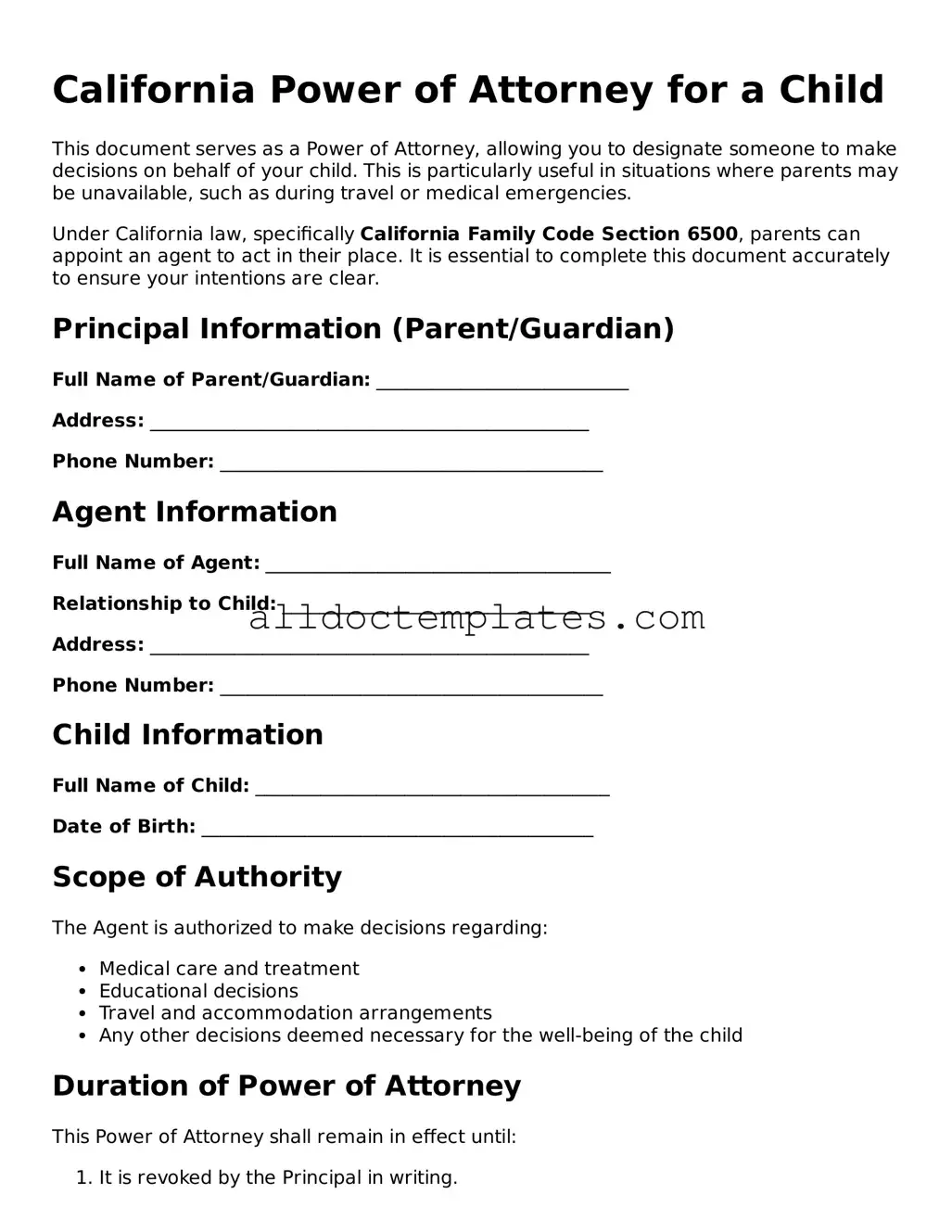California Power of Attorney for a Child
This document serves as a Power of Attorney, allowing you to designate someone to make decisions on behalf of your child. This is particularly useful in situations where parents may be unavailable, such as during travel or medical emergencies.
Under California law, specifically California Family Code Section 6500, parents can appoint an agent to act in their place. It is essential to complete this document accurately to ensure your intentions are clear.
Principal Information (Parent/Guardian)
Full Name of Parent/Guardian: ___________________________
Address: _______________________________________________
Phone Number: _________________________________________
Agent Information
Full Name of Agent: _____________________________________
Relationship to Child: _________________________________
Address: _______________________________________________
Phone Number: _________________________________________
Child Information
Full Name of Child: ______________________________________
Date of Birth: __________________________________________
Scope of Authority
The Agent is authorized to make decisions regarding:
- Medical care and treatment
- Educational decisions
- Travel and accommodation arrangements
- Any other decisions deemed necessary for the well-being of the child
Duration of Power of Attorney
This Power of Attorney shall remain in effect until:
- It is revoked by the Principal in writing.
- The child reaches the age of majority (18 years).
- A specified date: ________________________.
Signature
By signing below, the Principal confirms that they are granting the Agent the authority described herein.
Signature of Parent/Guardian: ____________________________
Date: _________________________________________________
Witnesses
This document should be witnessed by two individuals who are not related to the Principal or the Agent.
Signature of Witness 1: ________________________________
Print Name: ________________________________________
Signature of Witness 2: ________________________________
Print Name: ________________________________________
Notarization (optional, but recommended)
This document may be notarized to enhance its legal standing.
Signature of Notary Public: ____________________________
Date: ________________________________________________
Notary Seal:
